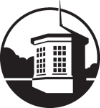Technological innovation has led to remarkable improvements in pedagogies and the dissemination of knowledge, dating back to the printing press. The current “disruptive innovation” of electronically mediated teaching and learning is reshaping some sectors of higher education, as evidenced by on-‐line college degrees, MOOCs, and the like. We expect these trends to continue and to spur broad rethinking of the essential components of higher education.
Like many of our residential liberal arts peers, we do not believe Haverford’s future lies in the use of technology to supplant the faculty-‐student dyad that is at the heart of what we do. Rather, we see great potential for technology to complement and enhance the generative energies of our intimate residential learning community.
Haverford, like our peers nationwide, is currently broadening its academic technology practice in support of advancing our core mission, in the classroom and out, using techniques such as lecture capture, “flipping” the classroom, and seamless collaboration with geographically remote partners. We will continue to invest in technologies that promise to contribute positively to the teaching, learning, scholarship, and community values that are at the heart of our enterprise.
-
Enhance pedagogy and scholarship
Our faculty, staff, and students are already demonstrating in their classrooms, labs, and beyond the potential benefits of technology to a liberal arts education. There is much more Haverford must do to support this generative work (for fuller discussion see the spring 2014 Report of the Technology Working Group):- Invest in our IT system. Maintain a robust set of IT services, systems, infrastructure and staffing that supports and contributes to the development of core competencies among faculty, staff, and students.
- Develop and sustain collaborations. Transformative scholarship occurs across disciplinary and institutional boundaries. We will continue to explore ways that technology supports and inspires collaboration, taking advantage of our existing relationships among campus individuals and departments, and with partners beyond campus, for example within TriCo.
- Build in capacity for innovation. Provide community members the physical spaces, forums, technological resources, skill development opportunities, and time to engage creatively with technology within and beyond their core areas of expertise.
-
Pursue new models of technological collaboration in support of residential liberal arts education
Cognizant of the tremendous power of our collective institutions, we will continue to work with peers to imagine new ways for our institutions to harness the power of technology. We believe that collective action among groups of colleges is more likely to gain traction than isolated efforts. Haverford has begun conversations with peer liberal arts colleges and other potential partners at the local level (BiCo, TriCo, and the Quaker Consortium), within the region (Pennsylvania Consortium for the Liberal Arts), and among its national cohort (Liberal Arts Consortium for Online Learning). Areas of exploration may include:- Enhanced teaching tools
- “Porous classrooms” that draw in diverse student, faculty and other voices through online exchanges
- Expansion of campus curricula
- Resources to enhance scholarship and research
- Faculty and staff development opportunities
- Reflection on academic governance structures that foster innovation
- Access to data about student learning and the impact of teaching innovations
- Collaborative and intuitive administrative systems
